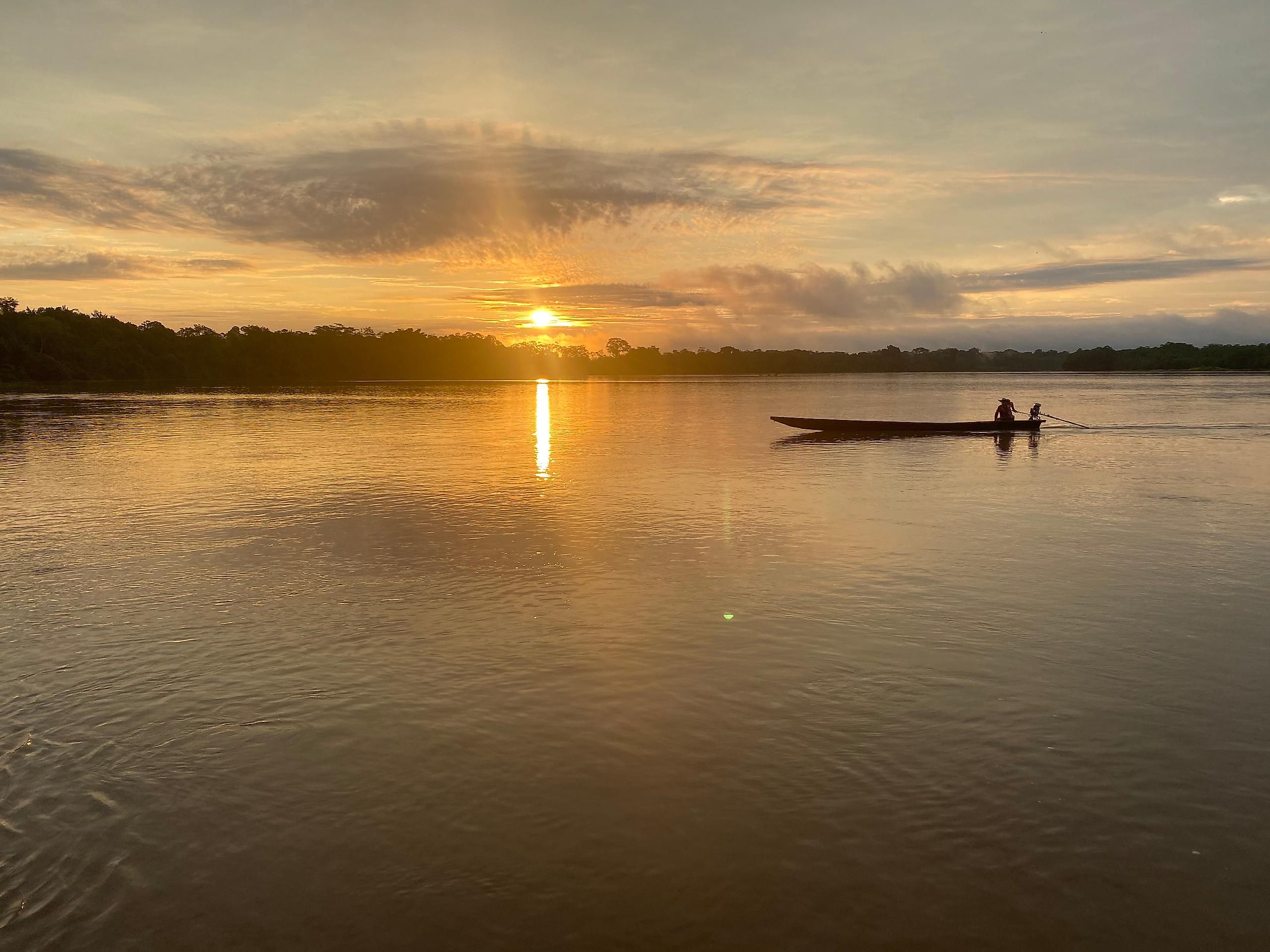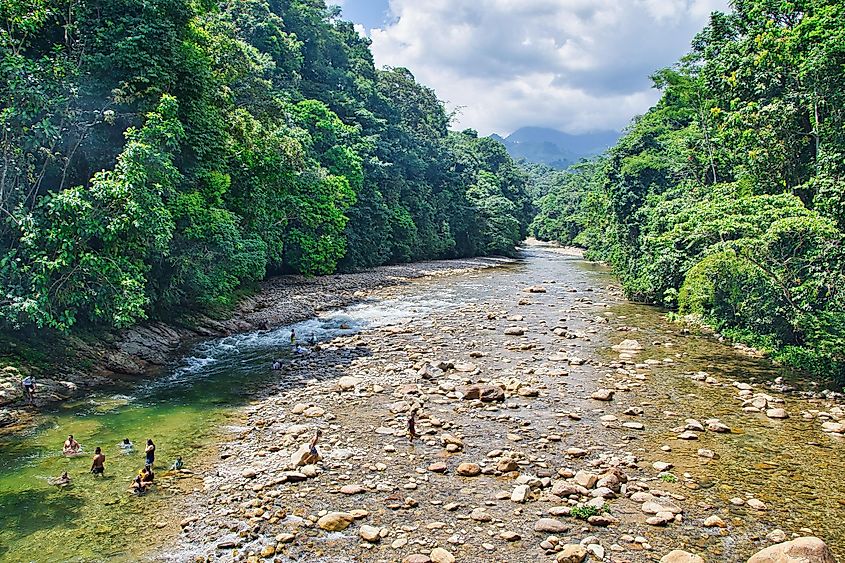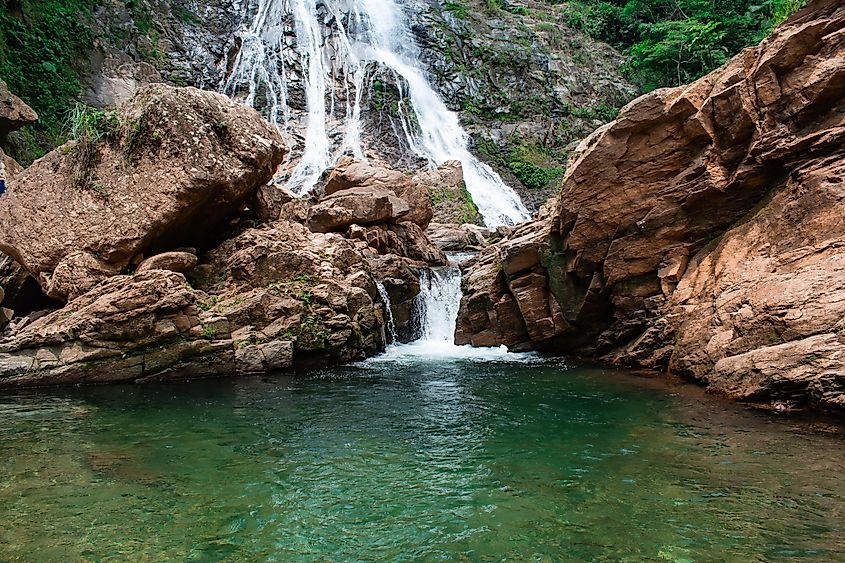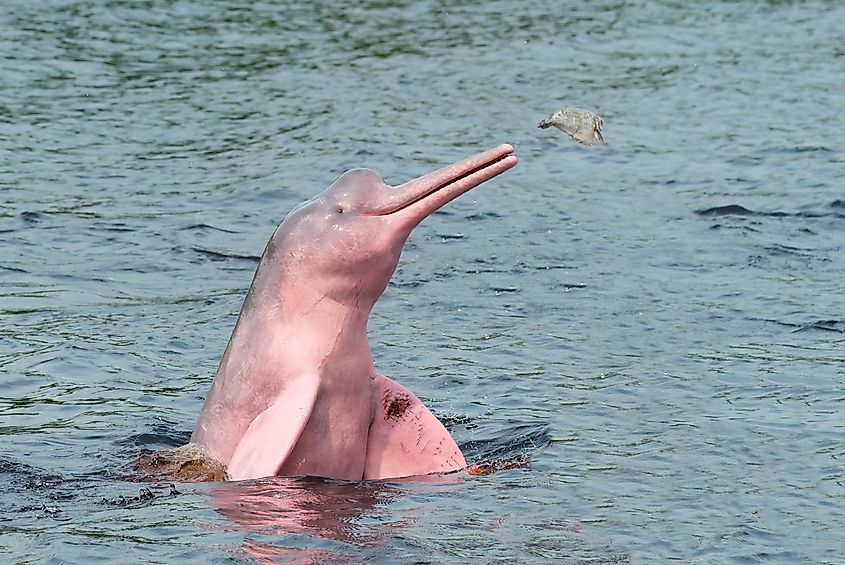
Caqueta River
The Caqueta River, which is also known as the Japurá River, is a massive waterway found in South America. More specifically, the Amazon Rainforest harbors this essential artery as it provides for the ecosystems that depend on it. Regarding human use, the Caqueta has been used for transportation and sustenance for millennia. It has witnessed conflicts between the 16th-century arrival of Spaniards and the indigenous empires of the continent. Today, it continues to be a base for the many species of plants and animals that call it home, as well as the tribes and cities that make the most out of it in their day-to-day life.
Geography

The Caquetá River originates from the Colombian Andes, specifically from the Eastern Cordillera, and meanders through both Colombia and Brazil before merging with the Amazon River. The River's journey encompasses a total area of about 98,000 square miles, making it one of the most expansive river basins in South America.
In its earliest stages, the Caquetá River traverses the rugged terrain of the Andean foothills in Colombia. It cuts through these highland regions, carving out deep valleys and gorges. As the River descends from the mountains, it feeds numerous tributaries and augments in volume, a testament to its role as a critical water source in the region.
As the Caquetá River flows eastward and leaves the Andes behind, it enters the expansive Amazon Basin, a region characterized by its vast lowland plains. Furthermore, the River's name becomes Japurá by this point. Here, the River's course becomes meandering, and it often changes direction, creating an intricate network of channels and backwaters. This part of its course is dominated by a fluvial landscape characterized by the continual deposition and erosion of sediments. The River's floodplains are wide and often submerged during periods of heavy rainfall, leading to the formation of temporary lakes and swamps. The climate of the Japurá River basin is predominantly tropical rainforest, marked by high temperatures and abundant rainfall throughout the year. The region receives an average annual precipitation of more than 98 inches, creating an environment conducive to rich biodiversity and supporting a thriving ecosystem.
The River's confluence with the Amazon occurs near the town of Tefé in Brazil. Here, the Japurá contributes a significant volume of water to the Amazon, enhancing the latter's status as one of the world's largest river systems.
History

The history of the Caquetá River begins with the indigenous communities who have lived along its banks for thousands of years. Due to its size and reach, one must realize that the history of the Caquetá River is simultaneously the history of the Amazon - the two are inseparable. The region's early societies developed intricate knowledge systems around the River, utilizing it for transportation, sustenance, and cultural ceremonies. The River was not just a physical entity but a vital part of their cultural and spiritual identity. The biggest Empires to occupy and use the River were the Inca and their predecessors, the Huari, and it is likely that the River was part of a societal infrastructure capable of sustaining millions of people.
In the 16th century, the arrival of European explorers significantly altered the course of the River's history. The Spanish, drawn by tales of El Dorado, ventured into the region, navigating the Japurá River in their quest for riches. The River became a central artery for exploration and conquest, shaping the narrative of colonial South America.
Despite its importance to the Spanish, the River remained relatively unexplored and unknown to the wider world until the 19th century. The exploits of explorers such as the Englishman Richard Spruce shed light on the River's course and the diverse cultures along its banks. Spruce's meticulous observations, published in his travel diaries, offered the outside world a glimpse into the River's unique cultural and natural environment.
The 20th century saw the Japurá River take on a new role as a critical waterway for regional development. Governments launched projects to harness the River's resources, focusing on transportation and hydroelectric power. These initiatives brought dramatic changes to the River and its surrounding communities, sparking debates about sustainability and indigenous rights.
In recent times, the River has become a focal point for conservation efforts, reflecting a global shift towards sustainable development and respect for indigenous cultures. Its history is now seen not just as a record of past events but as a guide for future actions, emphasizing the need to balance development with the protection of cultural and natural heritage. Egregious examples of human error include illegal mining operations that deforest large swaths of the Amazon while additionally polluting and poisoning its rivers.
Today, the region's economy primarily revolves around fishing, agriculture, and forestry. Fishing, both commercial and subsistence, is a mainstay for the local communities. The River teems with a variety of fish species, serving as a crucial source of protein for the local population. In the fertile floodplains, agriculture thrives, with crops such as cassava, bananas, and other tropical fruits being cultivated. Forestry, despite concerns about sustainable practices, continues to be a significant economic activity, with valuable hardwoods like mahogany and cedar being harvested. Furthermore, products like rubber add significant value to countries like Brazil in export income.
Flora And Fauna

As for flora and fauna, the river basin is home to many species that have both functional and aesthetic value. The diverse plant life includes towering trees, such as the kapok and the Brazil nut tree, as well as countless species of orchids and bromeliads. These plants provide habitat and food sources for the region's myriad animal species. The Pará Rubber Tree provides exactly what its name implies, allowing for the manufacturing of tires, hoses, shoe soles, balls, and more.
In terms of fauna, the River and its surrounding forests support a wealth of species. The Amazon river dolphin, also known as the pink dolphin, is a notable inhabitant of the Japurá River, as are various species of caimans and river turtles. The surrounding rainforest hosts a staggering diversity of bird species, including brightly colored macaws and toucans, as well as elusive creatures like the jaguar and the tapir. The River's tributaries are teeming with fish, including piranhas and the massive arapaima, one of the world's largest freshwater fishes.
The Caquetá River is an essential waterway, as its meandering course supports diverse ecosystems, serves as a crucial artery for human activity, and contains and continues a trend of incredible history. The River's basin is proof of its importance to wildlife, as it is home to an astounding variety of plant and animal species. The River is also a reminder of our shared responsibility to preserve and respect natural resources like itself. Without caring for the Earth, which brought humanity to the present, one cannot expect a future.










